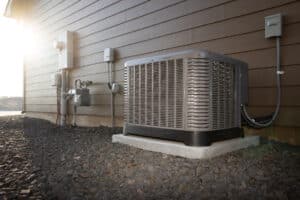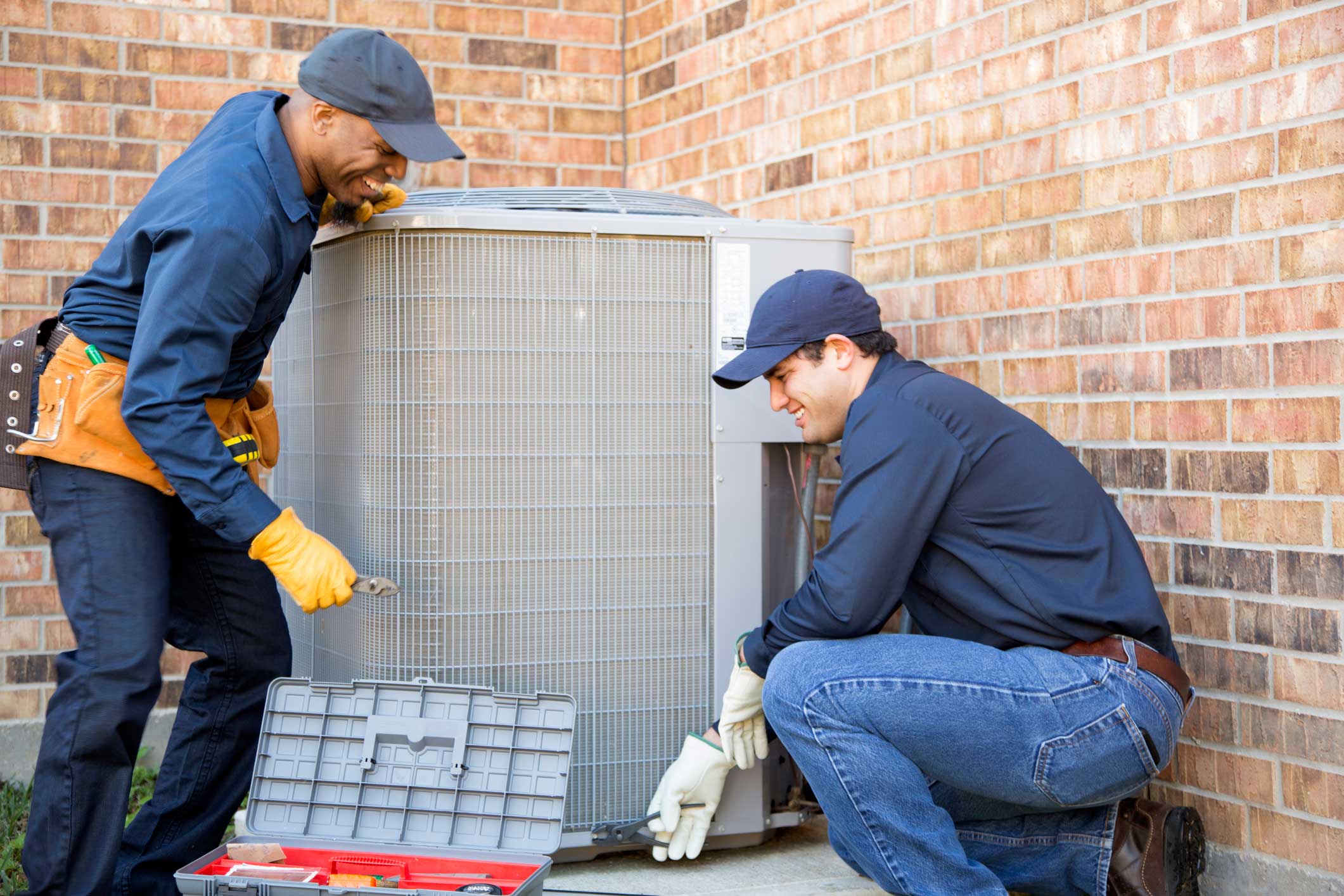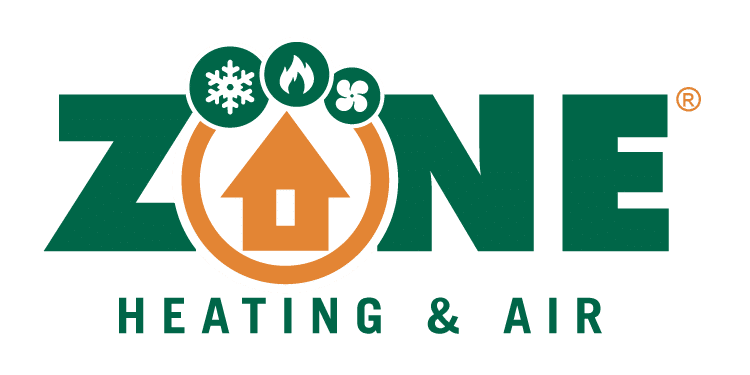 It’s the middle of summer, the sun is blazing, and you’re comfortably relaxing in your cool house. You can thank your air conditioning system for this small luxury. But, have you ever stopped to wonder, “how does my home AC work?”. Understanding this magical system can make you appreciate it even more.
It’s the middle of summer, the sun is blazing, and you’re comfortably relaxing in your cool house. You can thank your air conditioning system for this small luxury. But, have you ever stopped to wonder, “how does my home AC work?”. Understanding this magical system can make you appreciate it even more.
Simply put, your AC unit is a heat magician. It makes the heat disappear from inside your home and releases it outside. It does this by following a fascinating cycle. The answer to “how does my home AC work” is rather scientific, so let’s dive in.
Table of Contents:
- Decoding the Mystery: How Does My Home AC Work?
- Visualizing the Magic: The Air Conditioning Process
- Additional Points to Keep You Cool
- FAQs About How My Home AC Works
- Conclusion
Decoding the Mystery: How Does My Home AC Work?
The secret ingredient in this heat-moving magic trick is a chemical called refrigerant. This refrigerant continuously circulates inside your air conditioner, transforming from gas to liquid and back again. Imagine a hardworking train conductor tirelessly making trips back and forth; that’s your refrigerant.
The AC Players and their Roles: A Breakdown
Just like a good magic act requires talented performers, your AC needs a few key components working in perfect harmony to pull off this cool trick. Let’s explore how a central air conditioner works.
1. Compressor: The Pressure Builder
Located in your outdoor unit, the compressor acts like the heart of your AC system. Just like our heart pumps blood throughout our body, the compressor pushes the refrigerant between the indoor and outdoor units.
When the refrigerant arrives at the compressor, it’s a low-pressure gas. The compressor’s job is to squeeze this gas, increasing its pressure and temperature considerably.
2. Condenser Coil: The Heat Liberator
Remember that heated, pressurized refrigerant? That gets sent to the condenser coil, also located in your outdoor unit. The condenser coil’s job is to release the absorbed heat from inside your house to the outdoors.
A fan in the outdoor unit blows air over these coils, and you can usually feel this heat being expelled – like a warm exhale from your AC. The refrigerant cools and converts into a liquid.
3. Evaporator Coil: The Heat Absorber
Meanwhile, inside your home, the refrigerant, now cooled and in liquid form, flows into the evaporator coil. A fan blows warm air from your home across this chilled evaporator coil.
As this happens, the refrigerant absorbs the heat from the air and transforms back into a gas. What’s left? The refreshing, cooler air which the AC then circulates back into your home, creating cool air for your indoor space.
4. Thermostat: The Comfort Conductor
Of course, we can’t forget the director of this entire orchestra – your thermostat. This handy device lets you set your desired indoor temperature.
The air conditioning process kicks in automatically when the indoor temperature deviates from the set temperature on the thermostat. Your heat pump air conditioner will turn on, and the process repeats.
Understanding these core parts will give you a better idea of “how does my home AC work”, making you an informed homeowner who can keep their cool.
Visualizing the Magic: The Air Conditioning Process
You’ve met the key players. You understand the individual parts. But putting it all together can seem complicated. To help solidify your understanding of “how does my home AC work”, let’s break it down into easily digestible steps:
- Warm air inside your home is drawn into the system.
- The warm air passes over the evaporator coil. As the liquid refrigerant in the evaporator coil absorbs the heat, it transforms into a low-pressure gas.
- The low-pressure gas travels to the compressor and is pressurized, causing a temperature increase.
- The high-pressure gas is then sent to the condenser coil, where the heat is released outdoors. As the refrigerant cools, it converts back into a liquid.
- The refrigerant circulates back indoors to the evaporator coil.
- Steps 1 to 5 continue as needed to maintain the set temperature.
Additional Points to Keep You Cool
Now you understand the essential parts and the cooling process involved. Knowing more about installation costs and common refrigerants will give you a more complete picture of how this intricate system keeps your home comfortable.
Keeping an Eye on the Price Tag: AC Installation Costs
The cost nationally to install a new AC system will depend on things like the system’s size, efficiency ratings (SEER), and the intricacies of installation. Before embarking on this endeavor, ensure you understand the cost.
If you’re wondering about getting a new system, it’s always good to consider these cost factors and consult several trusted HVAC professionals. That will ensure you get a fair price and make sure your cooling systems are running efficiently.
Decoding the Lingo: Understanding Common Refrigerants
Ever hear of R-22 or R-410A? These cryptic codes denote different types of refrigerants commonly used in air conditioning systems.
Not all refrigerants are the same. It’s important to be aware of these differences as some, like R-22, are being phased out due to environmental concerns. New systems generally use a more eco-friendly option like R-410A, which, while better for the planet, can be a crucial factor if you’re considering replacing an older unit.
FAQs About How My Home AC Works
FAQ 1: How Does an AC System Work in a Home?
Imagine a magic trick with heat. Warm air from inside your home is pulled into the system. This warm air encounters a cooling agent called refrigerant, transferring its heat to the refrigerant. This chilled air then circulates back throughout your home, creating that comfortable coolness you feel. That heat, meanwhile, is sent outdoors, thanks to some clever components in your outdoor AC unit.
FAQ 2: How Does AC Work Step-by-Step?
1. Warm air is drawn into your home’s AC system.
2. The warm air flows over the cold evaporator coil, and the refrigerant absorbs its heat, cooling down the air.
3. The refrigerant (now a gas) travels to the compressor to be pressurized.
4. Next, it goes to the condenser, where it releases the absorbed heat, turning back into a liquid. This process is how your home ac works to produce cool air.
5. The process then repeats.
FAQ 3: How Do I Know If My Home AC Is Working Properly?
The most obvious indicator is, of course, that your home feels cool even when it’s hot outside. However, beyond that, be sure to listen to your AC for any strange sounds like grinding or screeching, as these might indicate a problem.
Ensure that cool air blows out of the vents, and monitor whether the system cycles on and off too often. Regularly changing the air filter located in your indoor unit and scheduling annual maintenance checks are the best ways to keep it running in tip-top shape.
FAQ 4: How to Set AC Temperature for Cooling?
Most people find a temperature between 72°F – 78°F comfortable. A programmable thermostat can make adjusting and maintaining your desired temperature a breeze. Just set it and forget it.
Conclusion
“How does my home AC work” is a question that may appear simple at first, but delving into the specifics reveals a well-choreographed system working behind the scenes to ensure you beat the summer heat. This process is also similar to how heat pump air conditioners work.
With knowledge of these key components, the refrigerant cycle, installation cost considerations, and common refrigerant types, you’ll be ready to tackle any heatwave, equipped to discuss your AC needs like a pro. Remember, understanding “how does my home AC work” gives you more control over your home’s comfort – and that’s real magic.
HVAC Repair is Just a Call Away


